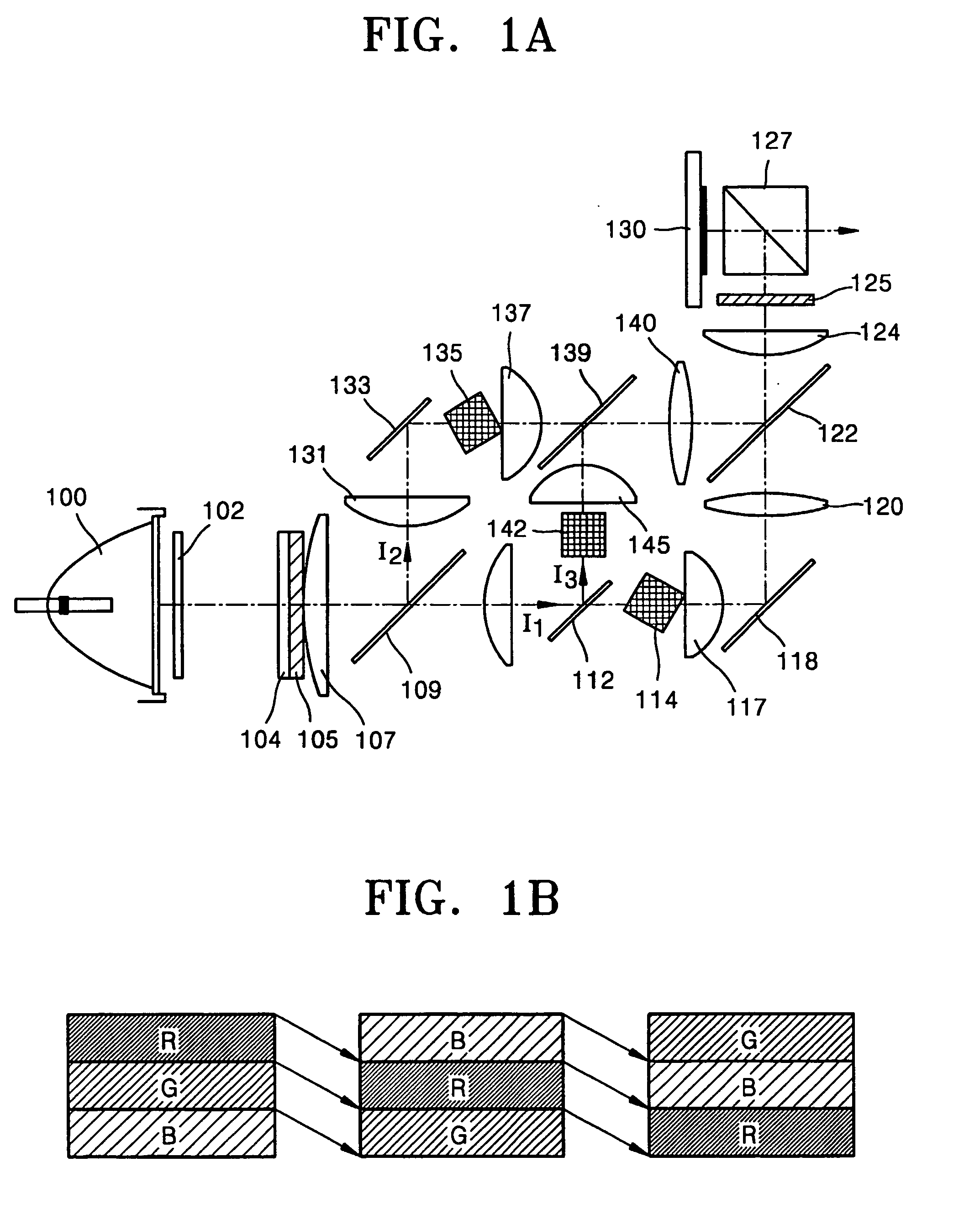Cylinder lens array and projection system employing the same
a technology of cylinder lens array and projection system, which is applied in the direction of fixed installation, lighting and heating apparatus, instruments, etc., can solve the problems of increasing the size the angle of divergence of the light efficiency of each of the r, g and b colors is only 13 of that of the three-panel type projection system, and the difficulty of assembly of the conventional projection system. achieve the effect of reducing the angle of divergen
- Summary
- Abstract
- Description
- Claims
- Application Information
AI Technical Summary
Benefits of technology
Problems solved by technology
Method used
Image
Examples
first embodiment
[0033] Referring to FIG. 4, a cylinder lens array according to the present invention is comprised of lens cells 20 having different central axes so as to reduce etendue by aligning light distributed radially from a light source in one direction.
[0034] A process of changing a radial light distribution into an asymmetrical light distribution using a cylinder lens array according to the present invention will now be described. As shown in FIG. 3A, light emitted from a lamp light source has a radial distribution. Since an aspect ratio of a screen is 4:3 or 16:9, a light valve 10 included in a projection system generally has a rectangular shape and an aspect ratio of 4:3 or 16:9. In FIG. 3B, the radial distribution (d) of light emitted from a light source is compared with the rectangular shape of the light valve 10. As shown in FIG. 3B, because the light valve 10 is rectangular whereas light emitted from the light source has a radial distribution, some light is not incident on the light ...
second embodiment
[0043] As shown in FIG. 8, a cylinder lens array according to the present invention is comprised of lens cells 25. The lens cells 25 are arrayed in curved rows. In other words, the inclination of their central axes continuously increases from the middle to the left and right edges of the cylinder lens array. As the number of lens cells 25 increases, a light loss area between lens cells is minimized, thereby maximizing light efficiency.
[0044] If the central axes of adjacent lens cells aligned in one direction are inclined consecutively, the lens cells may be connected to one another along their central axes and incorporated into a single lens cell. FIG. 9 shows a cylinder lens array comprised of cylinder lenses 27 made up of lens cells connected to one another along their central axes. The formation of a cylinder cell 27 by lens cells contributes to simplify a process for manufacturing cylinder lens arrays.
[0045] The cylinder lens arrays according to the first and second embodiments...
PUM
 Login to View More
Login to View More Abstract
Description
Claims
Application Information
 Login to View More
Login to View More - R&D
- Intellectual Property
- Life Sciences
- Materials
- Tech Scout
- Unparalleled Data Quality
- Higher Quality Content
- 60% Fewer Hallucinations
Browse by: Latest US Patents, China's latest patents, Technical Efficacy Thesaurus, Application Domain, Technology Topic, Popular Technical Reports.
© 2025 PatSnap. All rights reserved.Legal|Privacy policy|Modern Slavery Act Transparency Statement|Sitemap|About US| Contact US: help@patsnap.com



